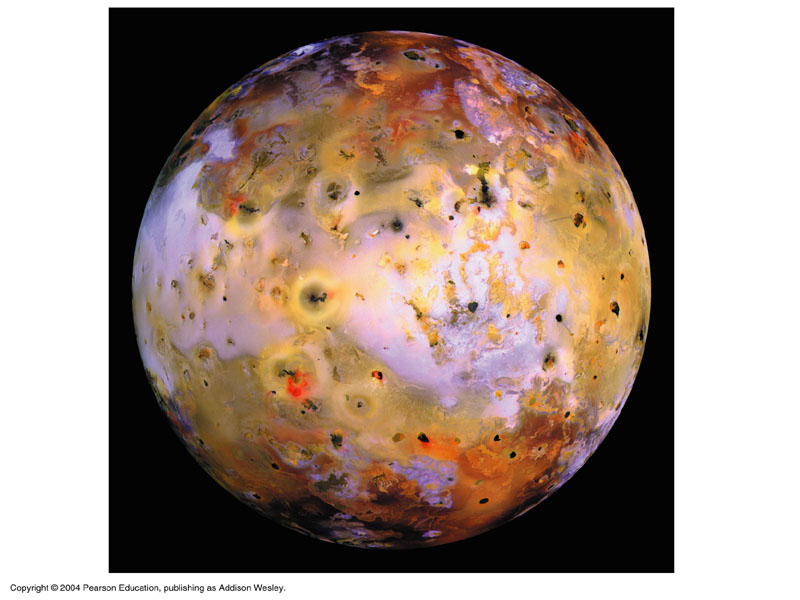Io's Surface

As you can see in the picture above, the
surface of Io is very unique. The dark spots you see are acutally
volcanoes. There are over 400 active volcanoes on the surface of Io.
However, the surface of Io is actually very cold considering it's
covered in volcanoes. The surface temperature of Io is about -150
°C, and can be colder in some places. Io most likely has an iron
core, and is about the same size as our own moon. It is also locked
with Jupiter, so only one side of Io faces Jupiter throughout its orbit.
Volcanoes
Looking at pictures of Io, there are no signs of impact craters
anywhere on the surface. This is because of the several volcanoes that
are scattered along Io's surface. When the errupt, the lava flows easy
down into all dips, holes, or craters on the surface, and gives the
surface a glassy appearance.When the volcanoes errupt, sulfur dioxide
(SO2) is released among other gases. Since Io has a very thin
atmosphere, most of the sulfur dioxide ionizes on its way out to space.
Some of the gas even makes it to Jupiter. The ionized gas contributes
to Io's torus, shown in the image below.

The torus is compsed of the sulfur
dioxide's electrically charged particles which are stuck in Jupiter's
magnetic field. Jupiter's magnetic field rotates with Jupiter, so a
full ring is created in around ten hours. Some of these charged
particles manage to make their way back to the surface of Io, and turns
the surface red, orange, and white. The red and orange colors mainly
come from sulfur ions, and the white colors come from sulfur dioxide.